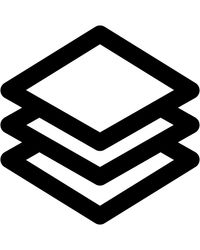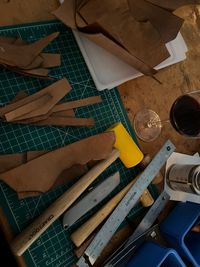
Full Grain vs. Top Grain Leather vs. Genuine Leather
What is the difference? What are you looking for?
Full-grain leather and top-grain leather are both products from real leather hides. Before leather tanneries send their leather to suppliers and other businesses, it is made into full-grain or top-grain leather.
Full-grain means that the scars and other markings from the animals life remain on the piece. The imperfections shine through and add character to the finished product.
Top-grain means the imperfections on the leather have been removed, creating a uniform appearance. This type of leather is often used my fashion brands due to the predictable appearance.
Both kinds have their uses and are appreciated by different audiences around the world.
On the other hand, genuine leather is made up of the shavings of leather that are left behind after full-grain and top-grain leathers are created. These shavings are glued and morphed into what is called "genuine" leather. It is essentially the partial board of the leather world. Is it technically leather? Yes. Will it last? No. Genuine Leather will flake and break much faster than full-grain and top-grain leather.
In other words, if you're looking for a leather product that lasts and look great while doing it, avoid products that are made of genuine leather.
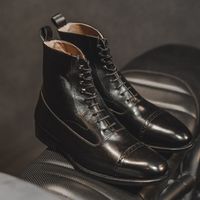
Beginner's Guide to Leather Care
Is it really that easy?
Congrats on purchasing a leather good from a small, independent leather company! Now what? How do I take care of it?
This guide is not meant to leather that is damaged; it if for people who want to take care of their leather from the beginning.
The most basic form of leather care occurs in two steps: cleaning & conditioning.
Cleaning your leather is meant to take the dirt and foreign oils off of your leather. To clean your leather, first go over the surface with a horse hair brush to remove surface level dirt. Search at a local flea market before buying new. Second, get a tin of saddle soap. It is cheap, efficient, and will last you a long time. Then, full the cap of the tin with water, dab a barber's brush in the water, transfer the brush to the soap, and move the brush in a circular motion to create foam. Then, apply the soap to the leather is small sections. Finally, take the soap off with a clean towel.
Conditioning the leather is meant to add healthy oils back into your leather and prevent the leather from drying out. There are many conditioners out there. Find one that is in your price range and be sure to read the reviews. Keep in mind that some conditioners smell differently and condition differently than others, so be on the look out for that information. If you are looking for additional direction, my favorite is Huberd's because of the rich smell and thick application.
You're done! Your leather is clean and looking as good as new. Repeat this process every 6 months, or when your leather looks like it needs some love. The products you purchased should last years, and your goods will thank you.
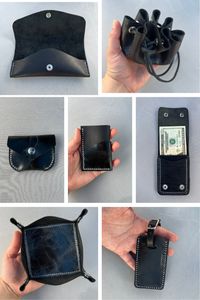
Veg Tan, Chrome Tan, & Oil Tan
Which is better? Why does it matter?
Veg Tan, Chrome Tan, & Oil Tan are all ways that cow hides are processed, or tanned, into leather. While everyone has their preference, there is not an objectively "best" way to tan leather. All methods have their place in the world of leathercraft.
Veg tanned, or vegetable tanned, leather is processed into leather using vegetable tannins which naturally break down the cow hide into leather. Different tanneries will have a preferred mix of different kinds of vegetables they use in their tanning process. This kind of tanning is preferred because it is eco-friendly and creates a stiff, durable leather.
Chrome tanned leather is processed into leather using chemicals that were made specifically for tanning. This method is faster and thus creates a cheaper alternative to other leathers. Additionally, chrome tanned leather is less stiff than other leathers which is ideal for bag making. Chrome tanned leather is often made out of top-grain leather, creating a uniform and supple product that is heavily utilized in the fashion industry.
Oil tanned leather starts as veg or chrome tanned leather and is finished with oils, creating a more expensive products that breaks in easier to veg tan leather. Since oil tan leather takes less time to break in, it is ideal for shoe & boot making.
At the end of the day, the attributes you want your leather goods to have should dictate the kind of tanning you're looking for.

